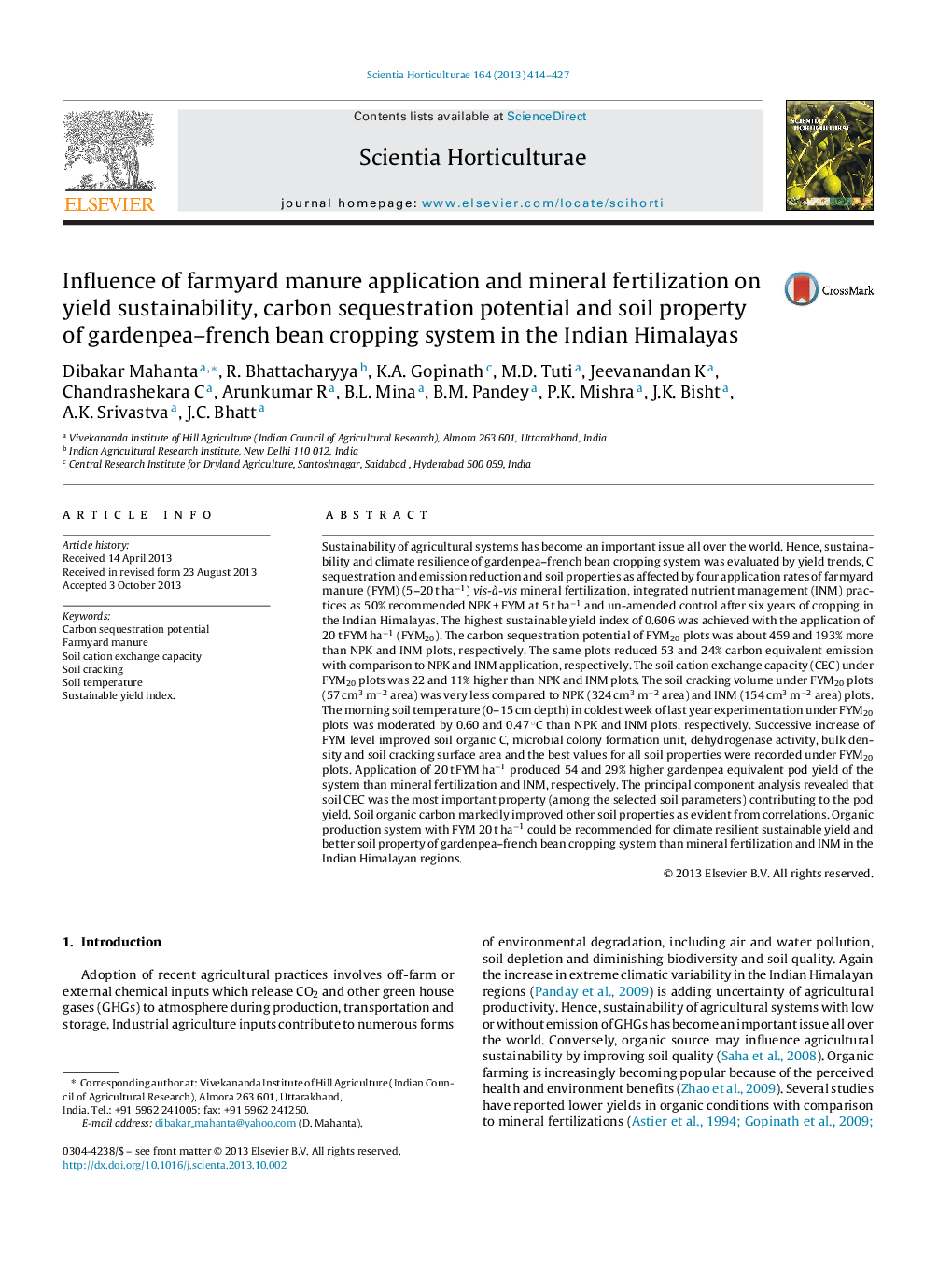| کد مقاله | کد نشریه | سال انتشار | مقاله انگلیسی | نسخه تمام متن |
|---|---|---|---|---|
| 4567088 | 1628834 | 2013 | 14 صفحه PDF | دانلود رایگان |

• CEC was found to be the most important soil property for productivity gain in gardenpea-french bean system.
• Plots under 20 t FYM ha−1 moderated soil temperature better, thus highly climate resilient than NPK and INM.
• Application of 20 t FYM ha−1 recorded higher carbon storage potential than mineral fertilization and INM.
• Soil cracking was drastically reduced with application of 20 t FYM ha−1 compared to NPK and INM plots.
• Plots under 20 t FYM ha−1 provided higher sustainability index than NPK and INM plot.
Sustainability of agricultural systems has become an important issue all over the world. Hence, sustainability and climate resilience of gardenpea–french bean cropping system was evaluated by yield trends, C sequestration and emission reduction and soil properties as affected by four application rates of farmyard manure (FYM) (5–20 t ha−1) vis-à-vis mineral fertilization, integrated nutrient management (INM) practices as 50% recommended NPK + FYM at 5 t ha−1 and un-amended control after six years of cropping in the Indian Himalayas. The highest sustainable yield index of 0.606 was achieved with the application of 20 t FYM ha−1 (FYM20). The carbon sequestration potential of FYM20 plots was about 459 and 193% more than NPK and INM plots, respectively. The same plots reduced 53 and 24% carbon equivalent emission with comparison to NPK and INM application, respectively. The soil cation exchange capacity (CEC) under FYM20 plots was 22 and 11% higher than NPK and INM plots. The soil cracking volume under FYM20 plots (57 cm3 m−2 area) was very less compared to NPK (324 cm3 m−2 area) and INM (154 cm3 m−2 area) plots. The morning soil temperature (0–15 cm depth) in coldest week of last year experimentation under FYM20 plots was moderated by 0.60 and 0.47 °C than NPK and INM plots, respectively. Successive increase of FYM level improved soil organic C, microbial colony formation unit, dehydrogenase activity, bulk density and soil cracking surface area and the best values for all soil properties were recorded under FYM20 plots. Application of 20 t FYM ha−1 produced 54 and 29% higher gardenpea equivalent pod yield of the system than mineral fertilization and INM, respectively. The principal component analysis revealed that soil CEC was the most important property (among the selected soil parameters) contributing to the pod yield. Soil organic carbon markedly improved other soil properties as evident from correlations. Organic production system with FYM 20 t ha−1 could be recommended for climate resilient sustainable yield and better soil property of gardenpea–french bean cropping system than mineral fertilization and INM in the Indian Himalayan regions.
Journal: Scientia Horticulturae - Volume 164, 17 December 2013, Pages 414–427